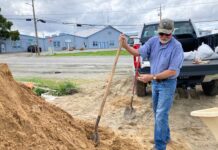When wind picks up at the Pinnacles National Monument, the
park’s six California condors in captivity often swoop through the
pen from one end to the other.
That’s a sure sign
– they’re ready to fly, according to Park Superintendent Cicely
Muldoon.
When wind picks up at the Pinnacles National Monument, the park’s six California condors in captivity often swoop through the pen from one end to the other.
That’s a sure sign – they’re ready to fly, according to Park Superintendent Cicely Muldoon.
“Boy, it’s been a long time coming. We can’t wait,” Muldoon said.
After a three-month stay in the park’s cautiously crafted pen, the condors will be released Dec. 19, an event members of the public are invited to attend, park officials say.
The project, to help national efforts to restore the endangered species’ population, has been under way since 1999. It will be the first ever condor release at Pinnacles, according to the project’s lead biologist, Rebecca Leonard. Only three other regions of the world are spearheading condor conservation efforts.
Officials with the National Park Service, Ventana Wilderness Society, park rangers from throughout the Western United States and several local politicians will be in attendance, Muldoon said. Congressman Sam Farr may also attend.
The release is scheduled for 11 a.m. that day, and shuttles will drive visitors from the east entrance of the park from 8:30-10:30 a.m, Muldoon said. From a spot where the park’s vans drop off onlookers, a 1-1/2-mile hike to the release point will remain.
“Bring good walking shoes and water,” Muldoon said.
Two biologists and an intern have been responsible for the care of the condors since September, according to Leonard. Previously, biologists with Ventana Wilderness Society cared for the birds for several months at Big Sur before the arrival at Pinnacles.
The scavenger species has been on the Endangered Species List since 1967. The condors’ presence at Pinnacles dates back to the late 1800s, about the same time the worldwide population began its steep decline. The number hit a low point of 27 in the 1970s, largely decimated by lead poisoning. Through restoration efforts, it is now around 220.
Once the condors are released, Muldoon said she hopes they adopt the park as their permanent homes. But there’s no guarantee, as many condors in other release programs have traveled to Southern California and remained permanently. The birds can travel 150-200 miles a day in search of dead carcasses.
“Our hope is they get out there and take a look at those rocks (the formations),” she said.
Anyone interested in the program or attending should call Pinnacles at (831) 389-4485, ext. 230 or go to www.nps.gov/pinn.









